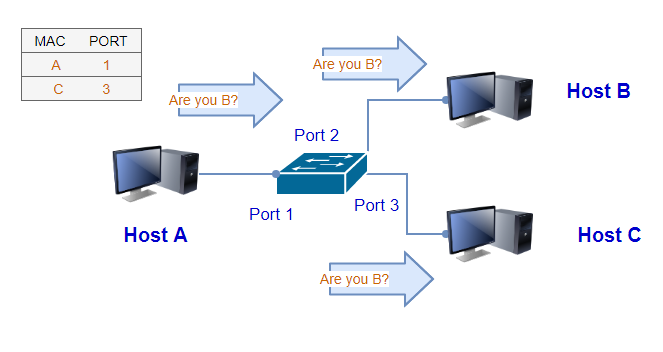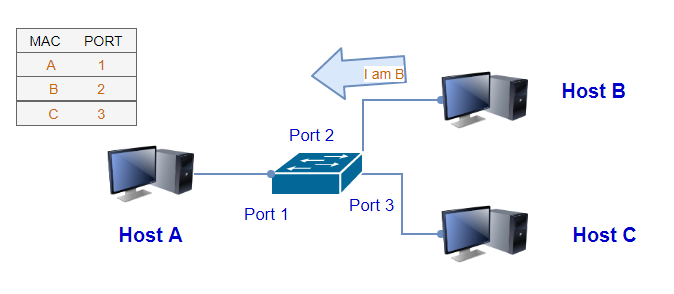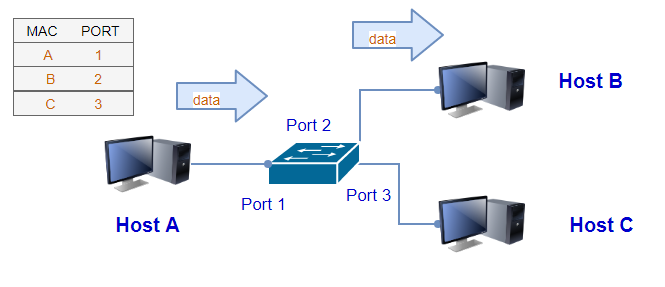MAC attack
MAC addresses are unique identifiers with two assigned parts—the OUI is assigned by IEEE, and the second 24 bits are assigned by the manufacturer. These addresses are stored in a table called the Content Addressable Memory (CAM). This table has a fixed size. The CAM stores information about MAC addresses after operating, as the following graph illustrates:

In this case, initially, the CAM contains two addresses with their port information. To send traffic from Host A to Host B, information about Host B should be included in the CAM table but this is not the case in this demonstration. Thus Host A sends an ARP request to all hosts. The hosts send back information about their MAC addresses and ports. Now Host A has information about Host B and stores it in the CAM table, as illustrated:

Finally, the CAM table contains all the required information about the hosts, including the destination host. So, the traffic from Host A to Host B should operate normally:

Attackers can exploit the...





































































